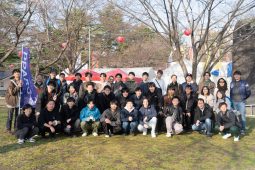PPARCセミナー(2024/06/03)

PPARCセミナー(2024/06/03)
(1)
[Name] Fuminori Tsuchiya
[Title]
衛星イオの火山活動と大気散逸のミッシングリンク
The missing link between Io’s volcanic activity and atmospheric dissipation to Jupiter’s magnetosphere
[Abstract]
衛星イオは太陽系で最も活発な火山活動をもつ天体である。火山活動で噴出したSO2ガスはイオ大気の主成分となっている。大気から毎秒1トンのガスが木星磁気圏に散逸し、S,Oイオンは木星磁気圏内のプラズマ質量の9割を担っている。これまでのイオプラズマトーラスの観測から、SO2ガスの散逸率は2~4倍の変化を示すことが知られている。散逸の原因とその変動の理解は、天体大気からの大気散逸過程と、磁気圏への影響の双方の理解に対して重要な課題となっている。この発表では、イオ大気の成因と散逸過程について現状の理解と未解明課題と整理し、今後の課題を議論する。
The first Galilean satellite Io is the most volcanically active body in the Solar System. SO2 gas ejected by volcanos is a major component of Io’s atmosphere. It is known that Io’s atmosphere is the primary source of plasma mass in Jupiter’s magnetosphere and the canonical source rate is one ton per second. From previous observations of the Io plasma torus, it is known that the escape rate of SO2 gas varies by a factor of 2-4. Understanding the escape process and its variability is an important challenge for understanding both the atmospheric escape process and its impact on the magnetosphere. In this presentation, we summarize the current understanding of the source and loss processes of the Io atmosphere and discuss the unresolved issues and future observations.
(2)
[Name] Keiya Kawagata
[Title]
Arase衛星の衛星電位を用いた地球磁気圏・電離圏の電子密度・温度導出の検討
[Abstract]
私たちは、Arase衛星において衛星電位から地球磁気圏・電離圏の電子密度を導出することを検討している。電子密度は、磁気圏の構造や変動を理解するのに不可欠な情報である。衛星電位を活用することの目標として、
①欠損時間の少ない電子密度情報の生成
②UHR周波数から求める電子密度との比較から低温電子情報の導出
③Arase衛星での電場計測の精度を支える
④BepiColombo水星探査における衛星電位計測の基盤を与える
が挙げられる。その中でも、本セミナーにおける目標として、
①Arase衛星における衛星電位とUHR電子密度の相関の評価
②衛星電位と電子密度の相関の経年変化を見ることにより、probe表面の経年劣化の評価
を挙げる。
解析方法として、UHR level.3のデータが存在する期間である2017年4月~2022年4月のデータを使用し、衛星電位とUHR周波数の相関を1か月ごとに作成した。また、4つの遠地点local timeについての経年変化を評価した。
今回得られた結果の一部として、衛星電位とUHR電子密度には、exponentialのような相関が見られた。





